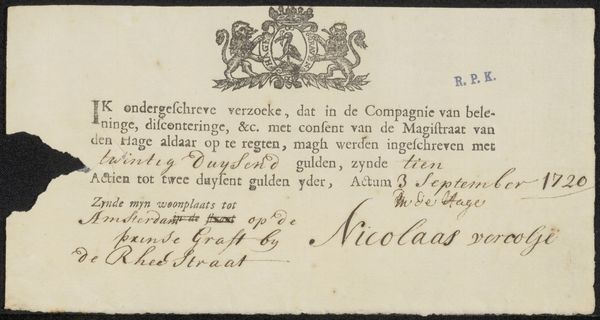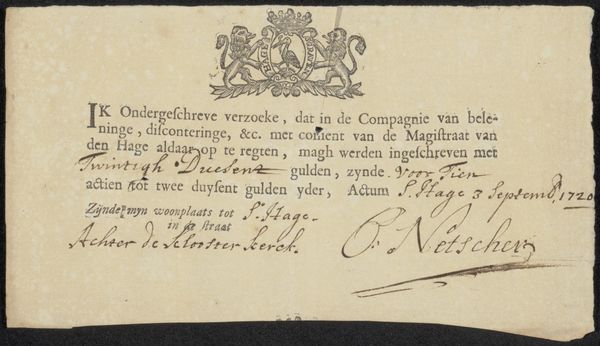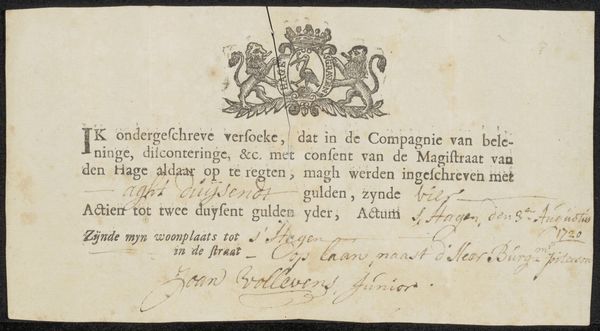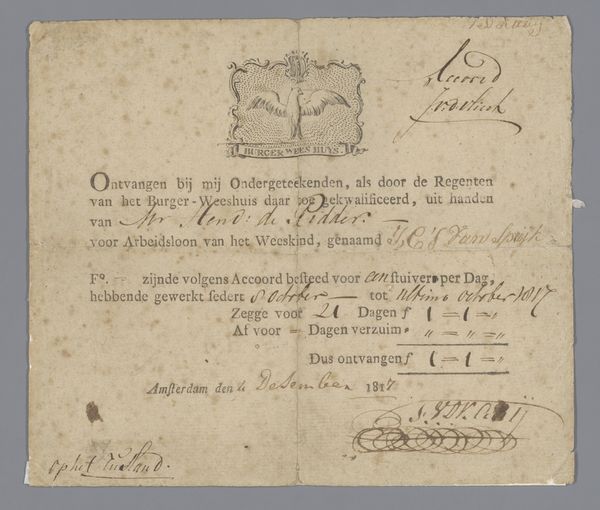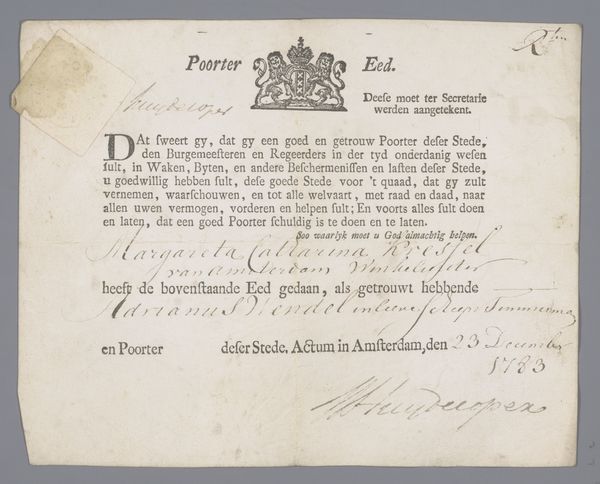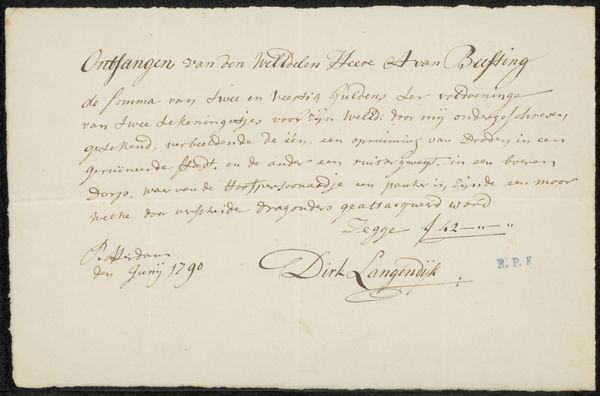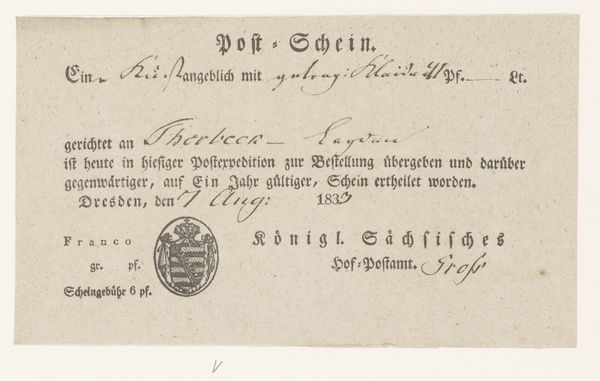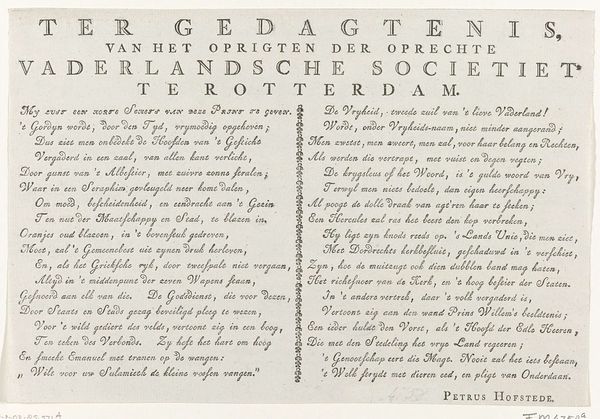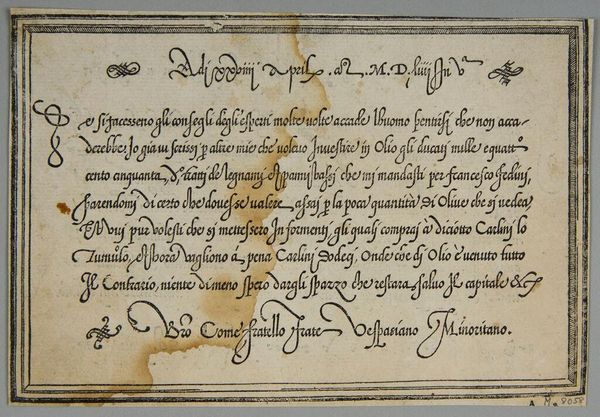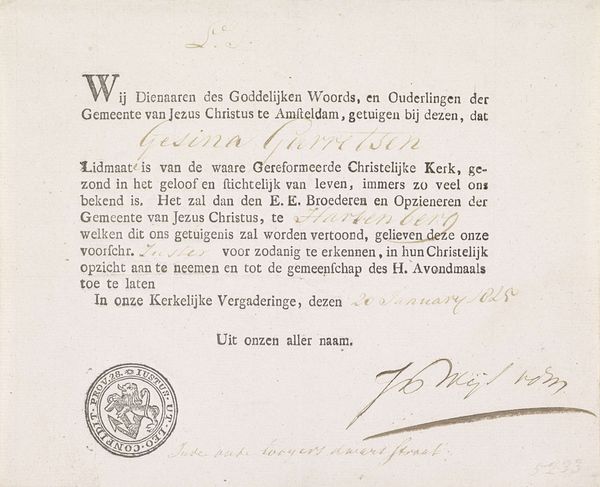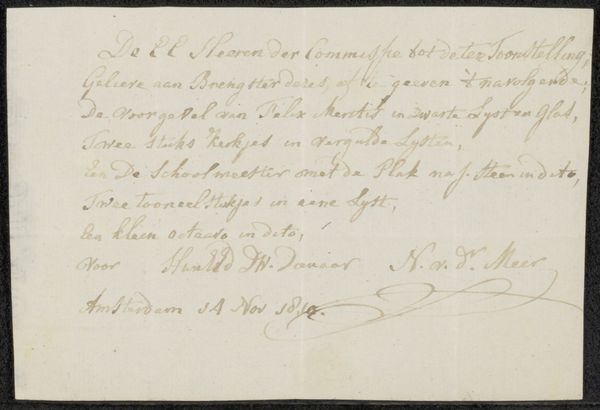
drawing, paper, ink, pen
#
drawing
#
dutch-golden-age
#
pen sketch
#
sketch book
#
hand drawn type
#
paper
#
personal sketchbook
#
ink
#
sketchwork
#
pen-ink sketch
#
ink colored
#
pen work
#
sketchbook drawing
#
pen
#
sketchbook art
#
calligraphy
Copyright: Rijks Museum: Open Domain
Curator: This pen and ink drawing on paper, titled "Inschrijvingsbiljet van Mattheus Terwesten," is held at the Rijksmuseum and was likely created sometime between 1720 and 1729. It appears to be a registration ticket. Editor: The penmanship is immediately striking; look how confident the linework is! It conveys such an interesting formality and immediacy, like seeing someone’s direct thoughts put onto paper. Curator: It’s fascinating to consider the paper itself. Notice the slight imperfections around the edges. Was it handmade? How were these materials sourced, and what was the social status implied by using this particular paper and ink during the Dutch Golden Age? It is like we see the labor of inscription at hand. Editor: Precisely! Considering the date, early 18th century, what were the cultural forces that shaped Terwesten's choices here? This wasn’t simply a mundane inscription; this was about capital, privilege, and entry into a "Compagnie," as indicated by the text, giving the creation a unique cultural significance related to financial participation and early capitalist ventures. Curator: That relationship with capitalism is critical. Look closely: it appears Terwesten invested 2000 gulden. Understanding how investment opportunities and artistic pursuits intersected for figures like Terwesten can offer a more nuanced view of the era’s socio-economic fabric and artistic patronage. Editor: And his signature! "Mattheus Terwesten, Deeken van de Contreije van Pictura." To call himself Dean of the Contreije van Pictura immediately situates this document within a very specific artistic and social hierarchy. Was this registration linked to his professional status or a way to establish credibility, reflecting the role of artistic communities in shaping early modern cultural life? Curator: Definitely. Examining his other work alongside this registration could reveal deeper connections. We have a chance to learn something more here about how early artist organized their profession, how financial and political support influenced the landscape of art production, and the materiality and circulation of money. Editor: Agreed. The historical layers here enrich our understanding of Dutch art and economy and make you want to consider other forms of artistic support in a pre-institutional environment. What could registration have implied regarding cultural mobility or class dynamics at the time? Curator: Ultimately, it adds depth and dimension to what could seem like an isolated document. Editor: Yes, it encourages us to ask who gets included or excluded in those burgeoning economies of culture and capital.
Comments
No comments
Be the first to comment and join the conversation on the ultimate creative platform.
